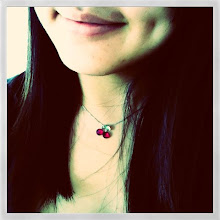Italian elegant dessert - Tiramisu.
When you first taste the Tiramisu, the feeling can be described as
An interesting journey of taste.
Scents of the Espresso and wine pass through your nerve every time you breath.
The very first layer covered by a thin layer of bitter-cocoa powder.
Follow by the soft and smooth creamy mascarpone cheese with crispy Savoiardi biscuit (known as "ladyfingers")
The sponge cake fully absorbed Espresso and Tia maria (the best alcohol for Tiramisu).
Rich but not too much.
From bitter to sweet and aromatic...
Some people said, Tiramisu represents love. And, there a love story behind......
During the dark day, a wife wanted to prepare a cake for her husband who were going for battle.
But, there were nothing left at home. All she could find were the pieces of old dry bread, milk, sugar, flour and alcohol.
She mixed them together then created Tiramisu.
Husband missed his wife every single time when he ate the Tiramisu made by his beloved wife at home.
When he finished the last bit, he found a note inside, "venire e portarmi via", -take me away...
Tiramisu expressed love of a wife towards her husband.
In modern day, Tiramisu not only a delicious dessert but also the best way to express your love.
Commonly used as wedding cake. Decorated by strawberries, blueberries or raspberries. Elegant and meaningful.
Tira (pick), mi(me), su(up)
-Pick me up-
But, there is a second explanation for 'pick me up'.
Some said pick me up is actually name after the ingredients of Tiramisu that can boost once energy up -
protein, sugar and caffeine!
Image from:
Tiramisu. (2008, Aug 14). Retrieved from Asia Finest Disscussion Forum: http://www.asiafinest.com/forum/lofiversion/index.php/t170435.html
Simply So Good: Tiramisu Cake. (2012, February 8). Retrieved from Blogspot: http://simplysogood.blogspot.com.au/2012/02/tiramisu-cake.html
References:
Over Caffeinated. (n.d.). Retrieved from Caffeine and the Effects on the Body: http://www.overcaffeinated.org/effects-of-caffeine-on-the-body.php
Black, J. (2007, July 11). The Trail of Tiramisu. Retrieved from The Washington Post: http://www.washingtonpost.com/wp-dyn/content/article/2007/07/10/AR2007071000327_2.html











